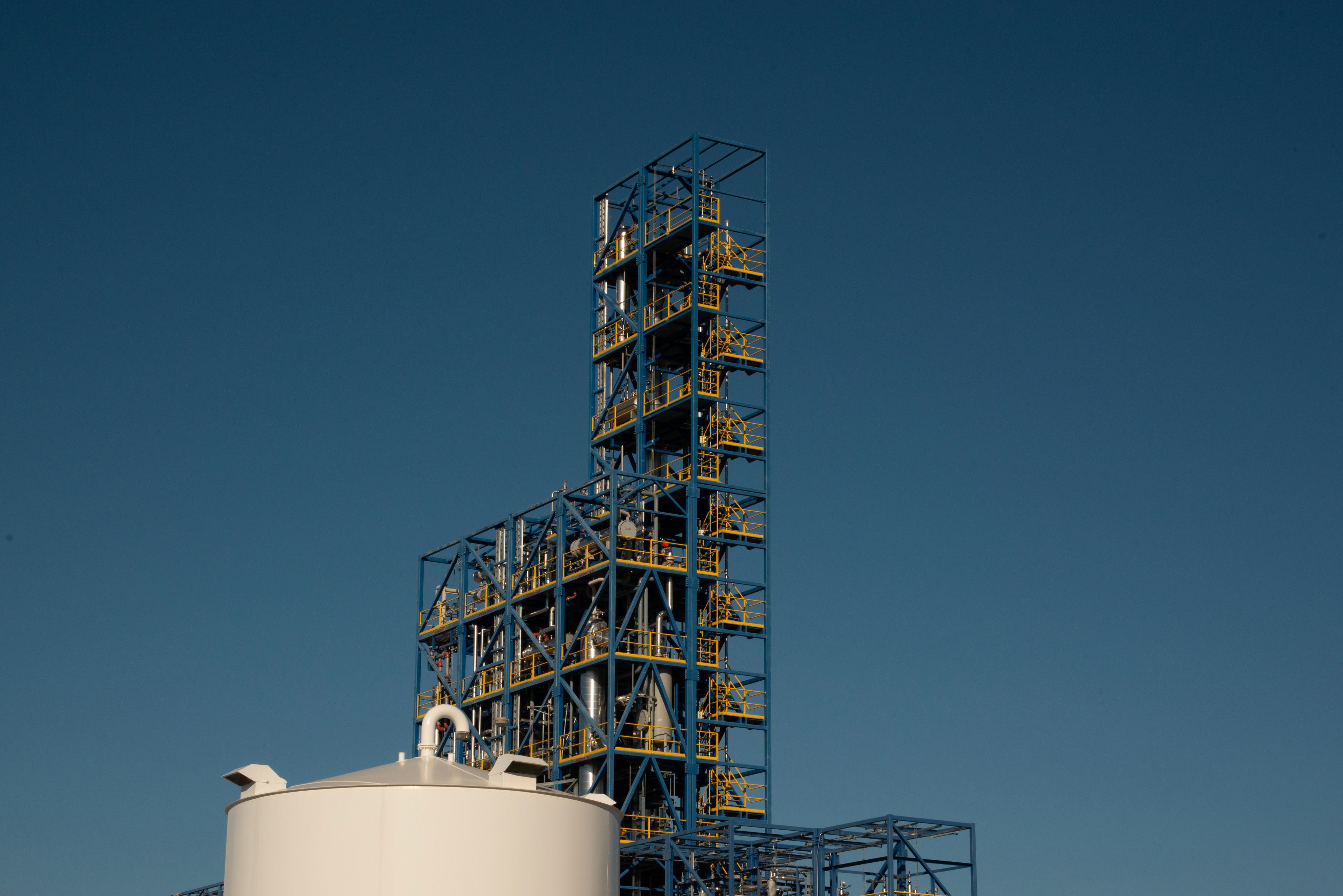Next-Generation SAF by LanzaJet and IAG

Richard Marsh, LanzaJet, and Leigh Hudson, International Airlines Group (IAG), introduce next-generation SAF technology in a contributed article appearing in the January 2025 issue of Hydrocarbon Engineering.
As the aviation industry grapples with the urgent need to reduce carbon emissions, sustainable aviation fuel (SAF) has emerged as a critical solution for decarbonising flights. Unlike conventional jet fuel, SAF has the potential to significantly reduce lifecycle greenhouse gas emissions, offering a sustainable alternative that works seamlessly with existing aircraft and fuelling infrastructure. Airlines around the world are making ambitious commitments to SAF, including International Airlines Group (IAG) – the parent company of British Airways, Iberia, Vueling, Aer Lingus, LEVEL, IAG Loyalty and IAG Cargo – which aims to achieve 10% SAF usage by 2030 and net zero emissions by 2050. Alcohol-to-Jet (ATJ) is a next-generation process that can help airlines achieve their sustainability goals. It is a scalable solution that converts ethanol into a drop-in, sustainable jet fuel that meets strict international aviation standards.
The ATJ Process
The ATJ process, certified under the ASTM D7566 Annex A5 pathway, transforms ethanol into high-purity synthetic paraffinic kerosene (SPK), a fuel that can be blended with Jet‑A or Jet-A1 fuel. The process shares many similarities with traditional fossil fuel refining processes. The conversion steps, such as dehydration, oligomerisation, hydrogenation, and fractionation, are all well-established techniques used in conventional refineries to transform hydrocarbons into fuels like diesel and jet fuel. In the ATJ process, these same techniques are applied to renewable feedstocks such as ethanol, ensuring that the resulting synthetic hydrocarbons are chemically identical to their fossil fuel counterparts. Importantly, LanzaJet’s solution is not derived from any form of oil – neither the oils used in hydroprocessed esters and fatty acids (HEFA) nor conventional fossil-based jet fuels – which marks a key turning point in the path toward net zero emissions for the industry.
The ATJ technology process begins with the catalytic dehydration of ethanol, converting it into ethylene through the removal of water. Ethylene then undergoes oligomerisation, where smaller molecules are combined to form iso-olefins. The hydrogenation step then saturates these iso-olefins into iso-paraffins, producing the clean, stable hydrocarbons needed for high-performance fuel. The final stage is fractionation, where the mixture of hydrocarbons is separated into different components, producing SPK along with synthetic paraffinic diesel (SPD), commonly referred to as renewable diesel (RD), as a co-product.
LanzaJet’s ATJ technology has been deployed commercially at the company’s Freedom Pines Fuels, the world’s first ethanol-to-SAF plant located in Soperton, Georgia, US. British Airways has secured offtake agreements for the SAF produced at Freedom Pines Fuels. The engineering phase of the plant spanned two years. Despite global supply chain disruptions from 2020 to 2023, the project progressed steadily until construction was completed in mid-2024. The plant is set to begin SAF production by the end of 2024 and will ramp up to full name plate capacity.
The Freedom Pines Fuels plant consists of two main sections, each critical to the ATJ production process. The first section utilises Technip Energies’ Hummingbird® technology, which converts ethanol into ethylene through dehydration. While ethanol-to-ethylene conversion is a well-established process, the Hummingbird technology optimises this step by maximising the yield of ethylene at a polymer-grade specification. The second section of the plant leverages LanzaJet’s ATJ technology – from oligomerisation to hydrogenation to fractionation into the final dual products of SAF (SPK) and RD (SPD).
The ATJ process offers significant flexibility in product output, enabling the production of varying ratios of SAF and RD based on market demand. In the maximum jet configuration, the process yields approximately 90% SAF and 10% RD by weight, while the maximum-diesel configuration can produce up to 75% RD and 25% SAF. The product distribution can be adjusted freely within this range, allowing the process to respond dynamically to shifts in demand for either fuel. Importantly, the total hydrocarbon yield remains virtually unchanged regardless of the SAF-RD ratio, and these adjustments can be made with only modest changes to operating conditions without the unit needing to shutdown. This level of product flexibility allows the ATJ technology to efficiently adapt to market pricing and demand while maintaining high operational efficiency.
The ATJ technology is also able to process a wide range of ethanol feedstocks, providing both flexibility and scalability in SAF production. Rather than being limited to a single carbon source, the technology is capable of converting ethanol from a variety of feedstocks, making it adaptable to different regional resources and industrial contexts. First-generation feedstocks, like sugarcane and corn, have long been used to produce ethanol and are widely available, particularly in regions with established agricultural infrastructure. For example, at Freedom Pines Fuels, the ATJ technology will convert ethanol produced from sugarcane and corn into SAF. To illustrate the scalability of this approach, current US ethanol production of approximately 17 billion gal. could yield around 11 billion gal. of SAF – over 50% of the US aviation sector’s annual jet fuel demand of 20 billion gal. Globally, with a total ethanol capacity of approximately 30 billion gal., approximately 20 billion gal. of SAF could be produced, covering nearly 20% of global jet fuel demand. These figures, though approximate, underscore ethanol’s potential to support aviation’s decarbonisation efforts.
…
Subscribe to Hydrocarbon Engineering to read more.